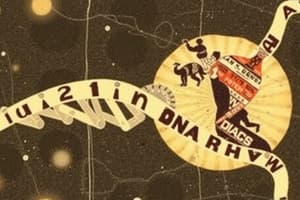Podcast
Questions and Answers
What distinguishes DNA replication from RNA transcription in nucleotide synthesis?
What distinguishes DNA replication from RNA transcription in nucleotide synthesis?
DNA replication creates DNA, while transcription creates RNA.
How is the difficulty associated with replicating a linear piece of DNA overcome in the nucleus?
How is the difficulty associated with replicating a linear piece of DNA overcome in the nucleus?
By using multiple origins of replication.
What is the function of DNA polymerase I?
What is the function of DNA polymerase I?
Removal and replacement of RNA primer.
What causes the problem with telomere replication?
What causes the problem with telomere replication?
Speculate on why a cell without telomerase activity has a limited capacity for cell division.
Speculate on why a cell without telomerase activity has a limited capacity for cell division.
Match the following DNA damage types with their descriptions:
Match the following DNA damage types with their descriptions:
Which DNA repair mechanism is associated with Lynch syndrome?
Which DNA repair mechanism is associated with Lynch syndrome?
What is the primary role of DNA glycosylases in base excision repair?
What is the primary role of DNA glycosylases in base excision repair?
What type of damage does nucleotide excision repair primarily fix?
What type of damage does nucleotide excision repair primarily fix?
All DNA damage leads to mutations.
All DNA damage leads to mutations.
What enzymes are involved in the repair of depurination?
What enzymes are involved in the repair of depurination?
What is the role of telomerase enzyme in telomere replication?
What is the role of telomerase enzyme in telomere replication?
What is microsatellite instability?
What is microsatellite instability?
Flashcards are hidden until you start studying
Study Notes
Objectives of DNA Replication and Repair
- Distinguish between nucleotide synthesis for DNA (replication) and RNA (transcription).
- Explain replication challenges of linear DNA and nuclear solutions.
- Restate functions of proteins involved in DNA replication.
- Identify and explain problems with telomere replication and solutions.
- Discuss the limited division capacity of cells lacking telomerase.
- Compare DNA damage and mutations.
- Differentiate spontaneous DNA damage from chemical/radiation damage.
- Illustrate repair mechanisms for deaminations, depurinations, and pyrimidine dimers.
- Name repair mechanisms from descriptions or diagrams.
- Associate Lynch syndrome with mismatch repair and Xeroderma Pigmentosum (XP) with nucleotide excision repair.
- Describe MSH and MLH protein roles in Lynch syndrome.
DNA Replication Speed
- Eukaryotic replication rate is approximately 50 nucleotides/second.
- Having around 4000 origins of replication per genome leads to ≈8 hours for complete DNA replication.
Key Components of DNA Replication
- Separation of DNA strands exposes hydrogen bond regions for base pairing.
- Free nucleotides are incorporated into newly synthesized strands by DNA polymerase.
- Prokaryotic DNA has three polymerases; Pol III is crucial for both leading and lagging strand synthesis and has proofreading ability.
DNA Polymerase Functionality
- All DNA polymerases add deoxynucleotides to the 3' hydroxyl group of a DNA chain.
- Key fidelity mechanism is proofreading by eukaryotic polymerases δ and ε, which can remove mismatches.
Replication Challenges
- DNA strands are antiparallel, complicating linear DNA replication.
- DNA primase synthesizes short RNA primers allowing DNA polymerase to initiate DNA synthesis.
Leading and Lagging Strand Synthesis
- Leading strand synthesized continuously; lagging strand synthesized in segments called Okazaki fragments.
- RNA primers provide a 3' hydroxyl for DNA polymerase; RNA is later replaced with DNA and sealed by ligase.
Telomere Replication
- Telomeres, repeating sequences at chromosome ends, prevent chromosome shortening.
- Telomerase, an enzyme with reverse transcriptase activity and RNA template, extends telomeric sequences.
- Somatic cells lack telomerase, leading to gradual telomere shortening and limited cell divisions (~50 times).
Importance of DNA Repair
- DNA replication introduces 100-200 mutations per round; high fidelity is critical to reduce errors.
- DNA damage is frequent occurrence; mutations arise from uncorrected damage.
Types of DNA Damage
- Spontaneous damage includes deamination (loss of amine groups) and depurination (cleavage between purine bases and sugar).
- Chemical/radiation damage, such as UV light-induced pyrimidine dimers, affect DNA structure.
DNA Repair Mechanisms
- Two main categories: direct reversal of damage and excision repair (removal and replacement).
- Base excision repair targets specific damaged bases, utilizing DNA glycosylases and other enzymes to restore normal DNA.
Mismatch Repair
- Identifies and repairs incorrectly paired bases post-replication, crucial for genomic stability.
- Lynch syndrome is associated with mismatch repair deficiencies, contributing to colorectal cancer.
Nucleotide Excision Repair
- Repairs bulky DNA adducts causing structural damage; enzymes recognize and excise damaged segments.
- Xeroderma Pigmentosum results from faulty nucleotide excision repair mechanisms.
Proteins in Repair Processes
- MSH and MLH proteins are crucial in mismatch repair; mutations in MLH1 and MSH2 are common in Lynch syndrome cases.
Studying That Suits You
Use AI to generate personalized quizzes and flashcards to suit your learning preferences.




